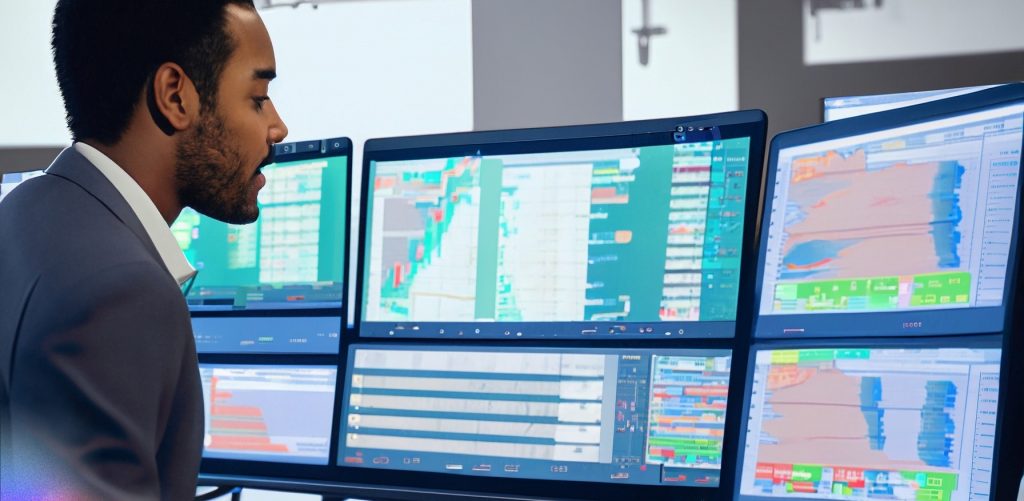In the rapidly evolving digital finance landscape, trading bot platforms have emerged as a pivotal tool for traders. These platforms serve a primary purpose: to automate trading processes. Whether you’re an individual trader or a business entity, trading bot platforms can be a game-changer. They are designed to automate trading on various financial markets, including stocks, cryptocurrencies, forex, and more.
The automation of trading processes is not just about convenience; it’s about efficiency and profitability. Trading bots can operate 24/7, meaning they can take advantage of market movements and opportunities that a human trader might miss. They can also execute trades faster and more accurately than a human, reducing the risk of costly errors.
Moreover, trading bots can help mitigate the emotional aspect of trading. Human traders are prone to emotional reactions, which can lead to impulsive decisions and risky trades. Bots, on the other hand, operate based on predefined rules and strategies, eliminating the risk of emotional trading.

Key Functionalities of a Trading Bot Platform
When choosing a trading bot platform, it’s crucial to consider the functionalities it offers. Some of the key features to look for include automated trading, backtesting, portfolio management, and risk management.
Automated trading is the core functionality of a trading bot. It allows the bot to execute trades based on specific strategies and patterns, without the need for human intervention. This can save you a significant amount of time and effort, and potentially increase your profits.
Backtesting is another important feature. It allows you to test your trading strategies against historical market data, helping you refine your strategies and identify potential issues before you start trading with real money.
Portfolio management tools can help you maintain a balanced and diversified portfolio. They can track your assets, calculate your profits and losses, and provide insights into your portfolio’s performance.
Risk management tools are crucial for mitigating potential losses. They can help you set stop-loss and take-profit levels, manage your leverage, and monitor your risk exposure.

Technical Considerations for a Trading Bot Platform
From a technical perspective, there are several factors to consider when choosing a trading bot platform. You might have specific programming languages or frameworks in mind for developing the trading bot platform. For instance, Python is a popular choice due to its simplicity and the availability of numerous financial and data analysis libraries.
Additionally, you may plan to integrate specific APIs or data sources with the platform. These could be APIs from cryptocurrency exchanges for market data and order execution, or data feeds from financial news services for sentiment analysis. These integrations can significantly influence the functionality and efficiency of your trading bot.
Security is another crucial technical consideration. The platform should have robust security measures in place to protect your funds and personal information. This includes encryption of data, secure API connections, and two-factor authentication.

Choosing a Trading Bot Platform: A Systematic Approach
Choosing a trading bot platform requires a systematic approach. It’s not just about the features and functionalities; it’s also about the platform’s reputation, its support for your desired trading strategies, the level of support provided by the team, and the cost of the platform.
The reputation of the platform is crucial. You should look for platforms that have been around for a while and have a track record of reliability and performance. User reviews and community feedback can provide valuable insights into the platform’s reputation.
The platform should support the trading strategies you want to implement. Whether you’re interested in trend-following strategies, arbitrage strategies, or custom strategies based on your own analysis, the platform should be flexible enough to accommodate your needs.
The level of support provided by the team is another important factor. Good customer support can make a big difference, especially when you’re dealing with technical issues or complex trading strategies. Look for platforms that offer comprehensive support, including documentation, tutorials, and responsive customer service.
Finally, consider the cost of the platform. Some platforms charge a flat fee, while others charge a percentage of your profits. Make sure to understand the pricing structure and ensure it fits within your budget.

Conclusion
In conclusion, choosing a trading bot platform involves careful consideration of various factors, including the bot’s functionalities, technical requirements, and the support provided by the team. By taking a systematic approach, you can choose a platform that meets your trading needs and helps you achieve your financial goals.

